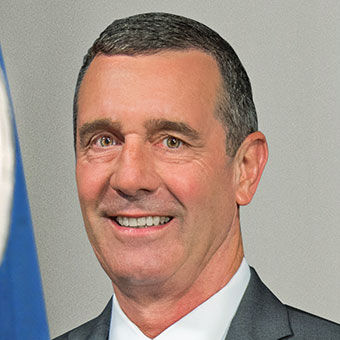
Throughput — the number of people passing through TSA checkpoints — is approaching the 2019 level at airports. While the agency has struggled with staffing coming out of the pandemic, it received good news in late December when Congress committed to raising TSA security officer pay an average of 30% beginning in July. Airlines editor Robert Silk spoke with TSA administrator David Pekoske about this and other issues.
Q: What type of shape is the TSA in in terms of checkpoint staffing?
A: We’re doing better. We recently got congressional approval to pay our workforce what the rest of the federal workforce gets paid. It’s trending in the right direction.
Q: Are there airports where you still have shortfalls?
A: We have shortfalls across the system. One of the airports where we have a larger shortfall is in Boston. On the West Coast, conversely, air travel hasn’t come all the way back for international flying. What we do is we move people around during busy travel periods.
Q: One issue that could cause larger surges at checkpoints is the general move by airlines to larger planes. How does TSA counter that trend?
A: The peak periods are higher peaks than in the past. But we work closely with airlines. And we aren’t surprised by what we see because we know what to expect from our own data. The challenge is the capacity of checkpoints, but there are ways we can increase throughput short of facility upgrades. For example, we are in the midst of upgrading software packages for screening machines. The Advance Imaging Technology machines, the ones that require people to put their hands above their head to detect anomalies on the body; the upgrades will improve our ability to detect anomalies. The second thing it does is reduces our false-alarm rate. Also, because it better recognizes anomalies, agents don’t need to input a person’s gender before they enter a machine. That reduces errors, which also improves the customer experience. The upgrades began in December and will be done in the summer.
Q: Checkpoints have also been adding what’s called Credential Authentication Technology, which verifies passenger identity from an ID — no need to show a boarding pass. How widespread is implementation?
A: We’re having some supply chain issues. Originally, those were only going to be put in place in [the largest airports], but we went back to Homeland Security and now it will it be included at every airport.
Q: You are also trialing digital ID verification from iPhones in Denver, Phoenix and D.C.-area airports. How is the trial going?
A: The tests have gone very well. It’s an enhancement to the first level CAT capabilities. It includes a camera for identify verification as well as the mobile applications. We are doing a limited number of tests. If all goes well, we’ll expand the usage. How fast will all depend upon our procurement ability, but it will take years.
Q: Getting back to upgauging, are there some airports where capacity concerns are especially acute?
A: There are capacity concerns across the system. Many airports have completely redone their operation or have built new facilities. We know which airports will be the busiest, and we’re doing work to expand infrastructure together with the airports. The Sunbelt airports have seen significant increases in passenger volume; we saw one of the biggest increases was at Austin. I would also look at some of our biggest airports. There’s a new terminal in Newark. LaGuardia is completely redone. There’s work in Denver.
Q:How about screening efficacy? TSA made headlines in 2017 when an inspector general’s investigation found that checkpoint screening missed 70% of fake weapons.
A: The purpose of our testing is to identify vulnerabilities. We use those results to improve, and we’ve done a lot of work. Part of the reason for the technology that we are implementing is to improve security efficacy; second is security effectiveness, which improves our throughput; and third, they improve the customer experience. I don’t invest in any new technology unless it meets those three objectives.
Source: Read Full Article










